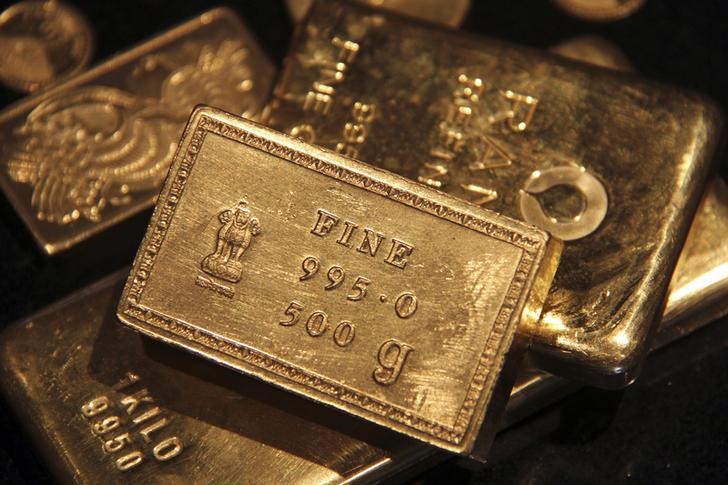By Barani Krishnan
Investing.com -- The Fed is costing the gold bug dearly.
As trading wrapped for June, bullion’s value dropped more than 8% for the second quarter, posting its worst three-month performance since the first quarter of 2021. For June itself, the slide was more than 2%, rounding out a straight month in the red.
Front-month gold futures for August on New York’s Comex settled Thursday’s trade itself down $10.20, or 0.6%, at $1,807.30 an ounce.
It was the same sluggish, downward mood exhibited by the yellow metal over the past two weeks as it remained stuck within a $20 trading band in the low $1,800 levels.
Traders attributed gold’s malaise to the Federal Reserve’s non-stop chatter about rate hikes, matched by this month’s highest increase in 28 years by the central bank in its effort to curb inflation growing at its fastest pace in four decades.
Despite that, some gold traders still found reason to be positive about prospects in the near term.
“Gold has without doubt had a disappointing second quarter. But on the bright side, it’s probably right where it’s going to start rebounding,” said Phillip Streible, precious metals strategist for Blue Line Futures in Chicago, who admitted to buying gold at the low $1,800 levels on Thursday.
“It’s normally the case; people start giving up on gold, and then it comes back,” Streible said. “The dollar’s strength will likely dissipate once the Fed can no longer surprise us with its rate hikes. And then, bond yields will surge again, indicating inflation, which works well for gold.”
The question of how gold will react to inflation has been a conundrum for investors ever since it rose to record highs above $2,100 in August 2020, then collapsed to $1,600 levels at one point before recapturing the $2,000 level earlier this year, albeit briefly. Despite its much-touted standing as a hedge against inflation, gold’s relationship with price pressures has barely been constant the past two years.
U.S. inflation, on the other hand, has consistently risen the past nine months while the nation’s economy has been constantly under threat.
Latest data from the Commerce Department on Wednesday showed that U.S. Gross Domestic Product contracted by 1.6% for the first quarter versus the 6.9% growth in the fourth quarter of last year. The department issues three GDP readings for each quarter. What was interesting about the first quarter was that each of the last two estimates came in a percentage point lower than previously.
The GDP reading reinforced market expectations that the United States was headed for a recession. With the 1.6% contraction in the first quarter, the economy will technically slip into a recession if it does not return to positive growth by the end of the second quarter, which ends Thursday.
Federal Reserve Chair Jerome Powell, meanwhile, told a European Central Bank event live-streamed from Portugal that the Fed was running against the clock to beat inflation. The central bank had no choice but to keep raising interest rates to achieve this, although there is no guarantee that it can provide a soft landing for the economy, Powell said.
“Is there a risk we would go too far [with rate hikes]?” Powell said. “Certainly there’s a risk. The bigger mistake to make — let’s put it that way — would be to fail to restore price stability.”
Many economists say the Fed left “rates too low for too long” and its catch-up now could unravel the recovery made since last year from the coronavirus pandemic. The Fed kept rates at between zero and 0.25% for two years during the pandemic, and only raised them this year in March. It has since brought key lending rates to between 1.5% and 1.75%. The central bank has said it will continue with rate hikes until inflation, running at 40-year highs of more than 8% per annum, returns to its target of 2% per year.
Such a rate hike environment may not bode well for gold.
